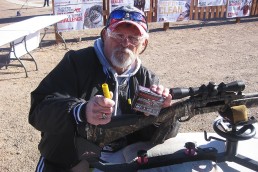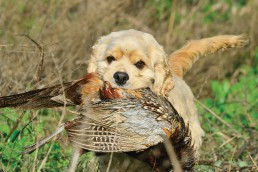SHARE THIS POST
In the days when men made a living by supplying markets with thousands of freshly harvested ducks and geese, times were tough. The retrievers that were developed to not only work but thrive in these conditions were tougher! To know this breed is to understand the history of the breed. What they were developed for and what they did.
The All-American Chesapeake Bay Retriever was named after the famous bay where they originated. Chesapeakes evolved and were used by the market hunters that worked in the area. Routinely retrieving hundreds of downed ducks, geese and swans in the most adverse conditions, they had to battle all day and halfway through the night through frigid temperatures, rough seas, high tide and icy surf—all in an effort to fill the American consumers demand for fresh game. After the long days, the dogs were then asked to perform the herculean task of guarding the gunner’s rig throughout the night as he traveled to the local market to deliver the harvested birds. The birds would then be packed and shipped north to the finest restaurants in New York, Baltimore and Chicago.
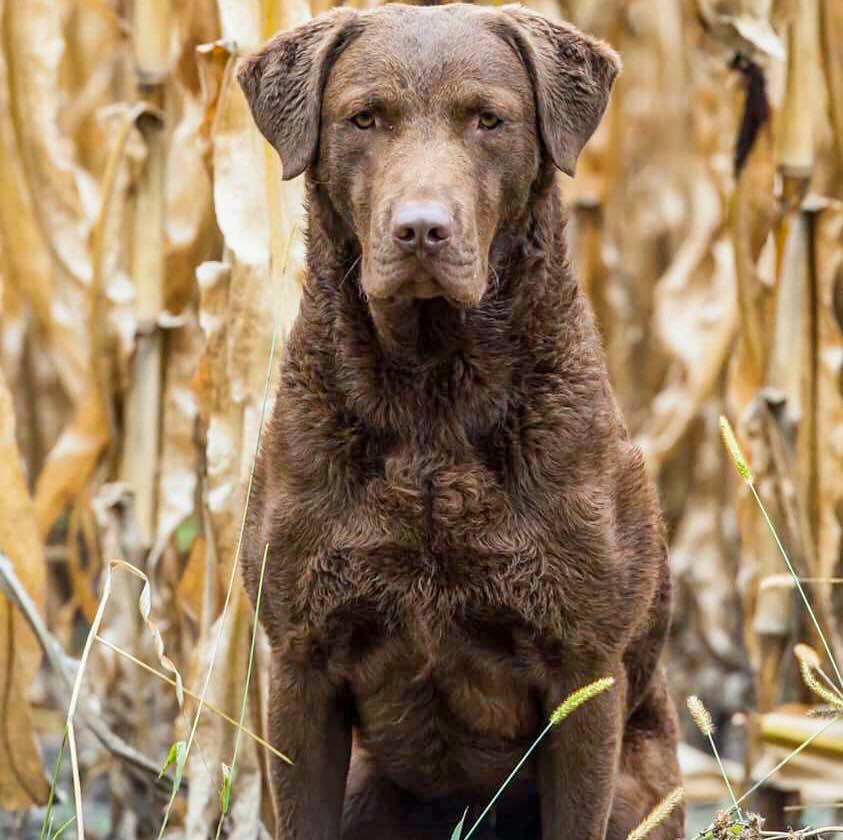
In Nash Buckingham’s classic book Game Bag, the author mentions his personal Chesapeake “Pat,” and highlights the breed’s power and work ethic after hundreds of retrieves while shooting on the mighty Mississippi River. “Pat has challenged the treacherous might of the most powerful river on earth. He’s battled its every hazard and fury and beaten down every obstacle its restless cunning could devise. Yep, he’s licked Ole Miss at her own game, with no odds or quarter asked or given.” Plain and simple, the Chesapeake Bay Retriever was purposely bred to work with flaming courage and unspeakable devotion.
History
Being the only retriever developed in the United States, this All-American’s storied history can be traced to a pair of pups rescued from a sinking ship off the coast of Maryland in 1807. The pups, Canton and Sailor, eventually, attained great reputations as outstanding water dogs. Living on opposite sides of the bay, Canton and Sailor presumably were never bred together; however, some of their decedents inevitably were. While these two provided the foundation for the Chesapeake, other breeds naturally were crossed with them to create the dog we know today.
The wealthy owners of the infamous duck clubs that lined both shores of the bay worked hard to carefully mate select dogs and create the breed standard. By the late 1800s, the Chesapeake Bay Retriever had been firmly established. In 1878, the Chesapeake was officially recognized by the American Kennel Club (AKC), becoming the first retriever to receive this formal acknowledgement.
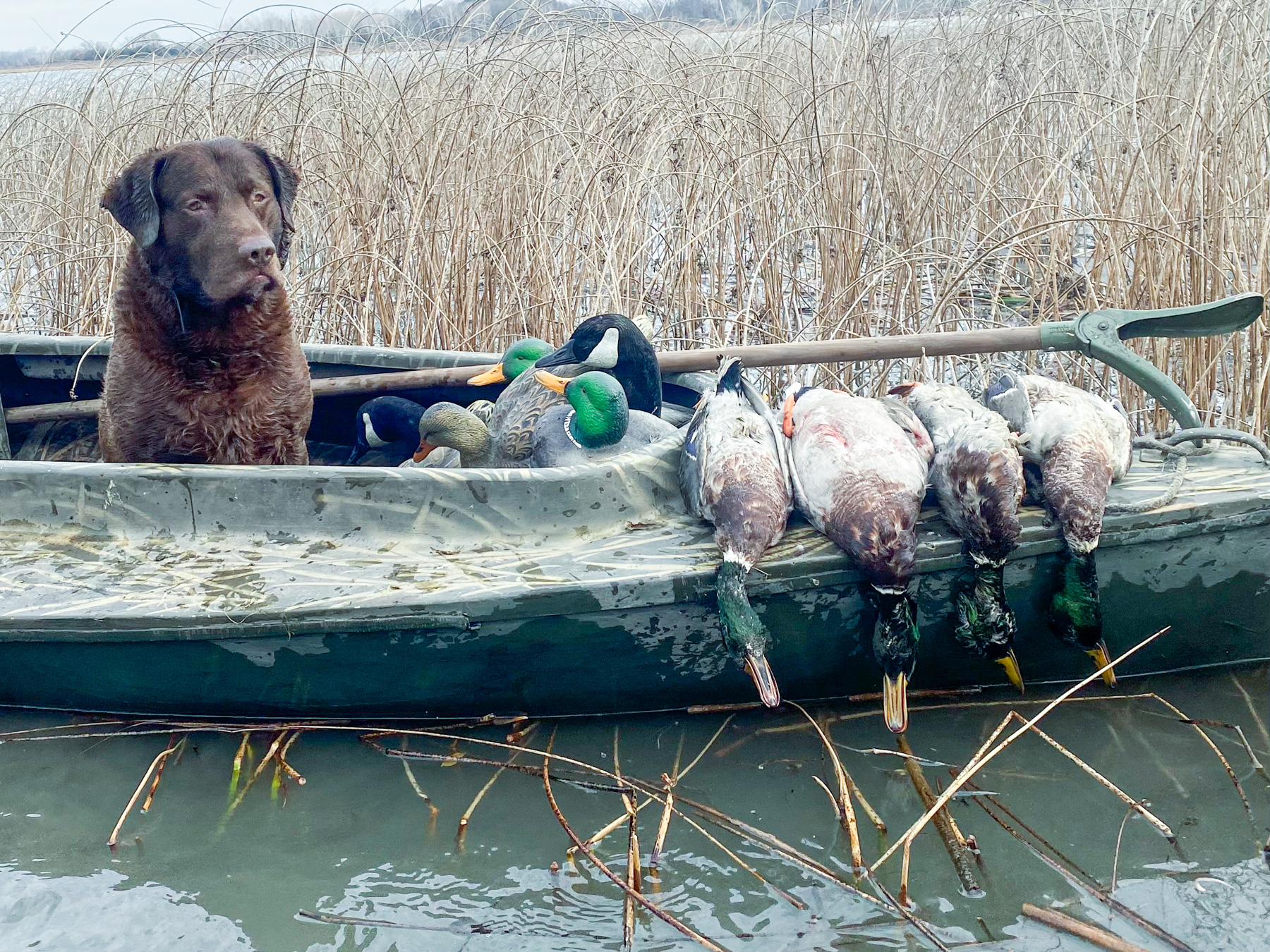
Are you enjoying this post?
You can be among the first to get the latest info on where to go, what to use and how to use it!
Standard
The breed’s characteristics are specifically suited to enable the Chesapeake to function with ease, efficiency and endurance. Declared Maryland’s state dog in 1964, the Chesapeake’s skull is broad and round. Its jaws are of sufficient length and strength to carry large game birds with ease. Their double coat consists of a short, harsh, wavy outercoat and a dense, fine, woolly undercoat and is ideally suited for the icy, rugged conditions in which they often work. Its body is strong and well balanced. They are a powerfully built animal of moderate size and medium length in body and legs. They have a deep, wide chest, and the shoulders are built with full liberty of movement, with no tendency to weakness in any feature.
The breed’s distinctive hindquarters, which can be a bit higher at the hip, contributes to its strong rear drive; this is especially helpful in the marshy footings of the wetlands in which they frequent. Males stand between 23 to 26 inches and females between 2 to 24 inches. The color of the Chesapeake must blend in, matching the environment in which they work. These colors range from dark brown, mudlike, to sedge or deadgrass. Males weigh between 65 and 80 pounds and females between 55 and 70 pounds.
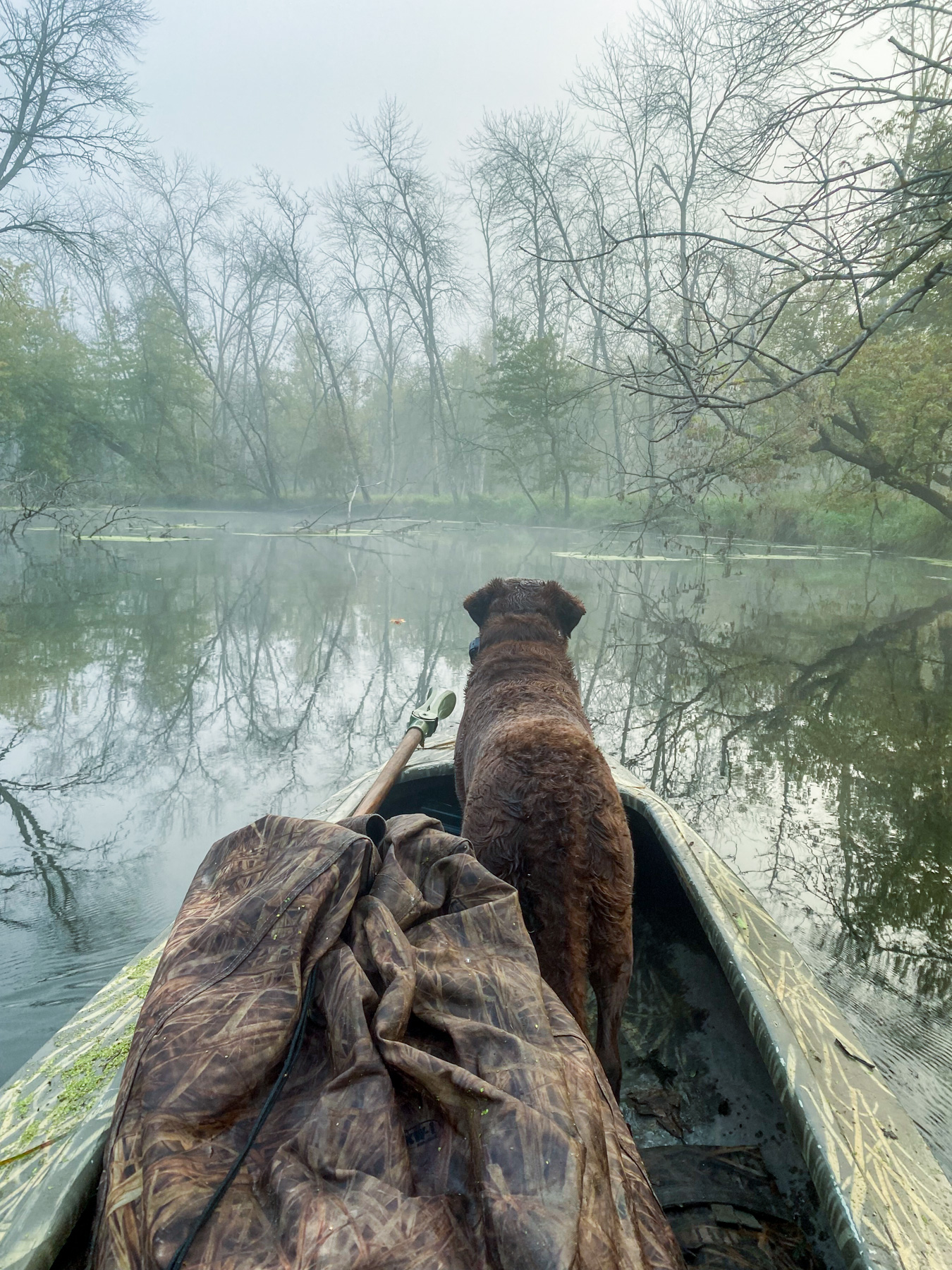
The rise of the dual-purpose retriever
As times have changed, Chesapeakes have as well. With shorter waterfowl seasons and smaller bag limits, the brown bombers have adapted and become dual-purpose dogs. Many have become very proficient in the uplands, and in many sportsman’s eyes they are also a pheasant’s worst nightmare. Besides being excellent upland dogs and devoted companions, these extremely versatile dogs excel in competition at field trials, hunt tests, dog shows and obedience trials.
The greatest strength of the breed is the fact that there is no split between conformation and field lines. In other words, you can have your dog in the duck blind in the morning, showing in the ring midday, and then chase roosters late into the evening. A true dual-purpose retriever. This is a credit to the breeders, both past and present, and shows that through over two hundred years of careful and selective breeding. Today’s Chesapeakes look, move and perform as they did in the late 1800s.
The future
Chesapeake Bay Retrievers are as deeply intertwined with waterfowling as the decoys we use and the calls we blow. This four-by-four of the retriever world has stood the test of time and continues to thrive. As long as cold north winds blow, lakes begin to turn hard, and the icy sting of sleet pelts away at our faces, there will always be a big, blocky Chesapeake at a fowler’s side, standing guard over the decoys. His amber eyes will be to the sky, his thick wavy coat covered in snow and his ears perked ready for the call to duty, as they have for over 215 years.
by James Davis
James Davis of Whitefish Bay, Wisconsin is an avid bird hunter and Chesapeake Bay Retriever enthusiast. He devotes his free time to chasing ducks and pheasants on public lands throughout Wisconsin with his two brown clowns, Pilot and Rogue. He aims to share his outdoor adventures to enrich others and encourage them to enjoy what nature has to offer.
MWO
SHARE THIS POST
Did you enjoy this post?
You can be among the first to get the latest info on where to go, what to use and how to use it!
MWO
We believe being outdoors is good. With more than 1,000 articles each year, MidWest Outdoors magazine is all about sharing outdoor experiences with you—where to go, what to use and how to use it… whether you’re close to home or on that trip of a lifetime.

